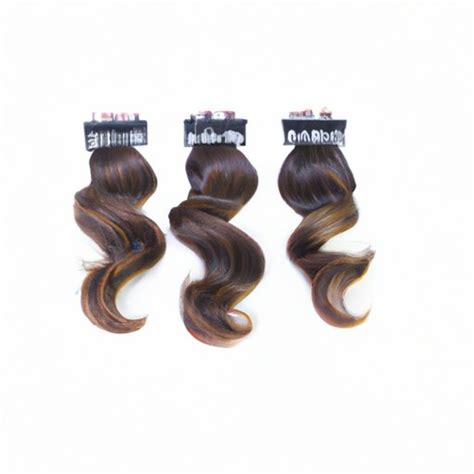Introduction
Edges, the delicate hair that frames your face, play a vital role in enhancing your overall appearance. When styled meticulously, edges can accentuate your facial features, add definition to your hairline, and boost your confidence. This comprehensive guide will explore the intricate world of edges for hair, empowering you with the knowledge and techniques necessary for flawless styling and maintenance.

Understanding the Anatomy of Edges
Edges consist of fine, often curly or coily hair that grows along the perimeter of your scalp. They form a delicate border that frames your face, influencing the overall shape and balance of your hairstyle.
Types of Edges
Edges can be classified into several types, each with unique characteristics:
- Baby hairs: Newly grown hairs that are typically short and wispy.
- Temple hairs: Edges located at the temples, framing your forehead and temples.
- Nape hairs: Edges located at the nape of the neck.
- Sideburns: Edges that extend from the temples to the jawline.
The Importance of Edges for Hair Health
Edges are not merely aesthetic elements. They also play a vital role in maintaining hair health:
- Protect the scalp: Edges form a protective barrier against environmental stressors, such as pollution and UV radiation.
- Retain moisture: Edges help trap moisture within the hair, preventing dryness and breakage.
- Stimulate blood flow: Massaging the edges promotes blood flow to the scalp, nourishing hair follicles and promoting hair growth.
Styling Techniques for Flawless Edges
Essential Tools
- Edge brush: A soft-bristled brush specifically designed for shaping and smoothing edges.
- Edge control products: Gels, creams, or pomades that help hold edges in place.
- Mousse: Adds volume and definition to edges.
- Hairspray: Locks in styles and provides hold.
Basic Styling Methods
- Wet-styling: Dampen edges with water or a leave-in conditioner and apply a small amount of edge control. Use an edge brush to shape and smooth them.
- Dry-styling: Apply edge control directly to dry edges and use an edge brush to distribute evenly.
- Laying: Create a flat, sleek look by applying a generous amount of edge control and using an edge brush to press the edges down against the scalp.
Advanced Techniques
- Feathering: Blend edges into longer hair to create a seamless transition.
- Swooping: Create soft, curved edges by using a small amount of edge control and an edge brush to shape them into desired curves.
- Finger waves: Form intricate waves along the edges using your fingers or a styling comb.
Maintenance Tips for Healthy Edges
Maintaining healthy edges requires consistent care and attention:
- Protect from heat damage: Avoid excessive blow-drying or flat ironing, which can weaken edges. Use heat protectant spray before applying heat.
- Moisturize regularly: Apply a leave-in conditioner or edge control product daily to keep edges hydrated and prevent dryness.
- Avoid overstyling: Excessive use of edge control products and styling techniques can put strain on edges. Allow them to rest occasionally.
- Trim regularly: Trimming split ends or uneven edges promotes healthy growth.
- Massage the scalp: Massaging the scalp around the edges with a soft brush or fingertips stimulates blood flow and promotes hair growth.
Common Mistakes to Avoid
- Overdoing edge control products: Applying too much edge control can weigh down edges and make them look clumpy. Use a small amount and distribute it evenly.
- Using harsh chemicals: Avoid using harsh products that contain sulfates or alcohol, as these can strip away natural oils and damage edges.
- Neglecting moisture: Dry edges are more prone to breakage. Moisturize regularly to keep them healthy and strong.
- Styling too tightly: Pulling edges back too tightly can damage the hair follicles and cause breakage. Use gentle techniques and avoid putting excessive tension on edges.
Solutions for Common Edge Problems
Thinning Edges
- Use a hair growth serum or oil that contains biotin, caffeine, or peptides to stimulate hair follicles and promote growth.
- Gently massage the scalp around the edges to improve blood flow.
- Avoid overstyling and excessive heat damage.
Dry Edges
- Apply a deep conditioner or hair mask regularly to replenish moisture.
- Use a leave-in conditioner or edge control product that contains humectants, such as glycerin or hyaluronic acid.
- Avoid using products that contain sulfates or alcohol.
Frizzy Edges
- Use a smoothing serum or cream to tame frizz and create a sleek look.
- Apply a small amount of hairspray to hold down frizz.
- Use a wide-tooth comb to detangle edges gently.
Conclusion
Edges for hair are a vital aspect of overall hair health and style. By understanding their anatomy, employing the right styling techniques, and practicing consistent maintenance, you can achieve flawless edges that enhance your appearance and boost your confidence. Remember to avoid common mistakes, seek solutions for any challenges, and embrace the endless possibilities that edges offer in the realm of hair styling.
